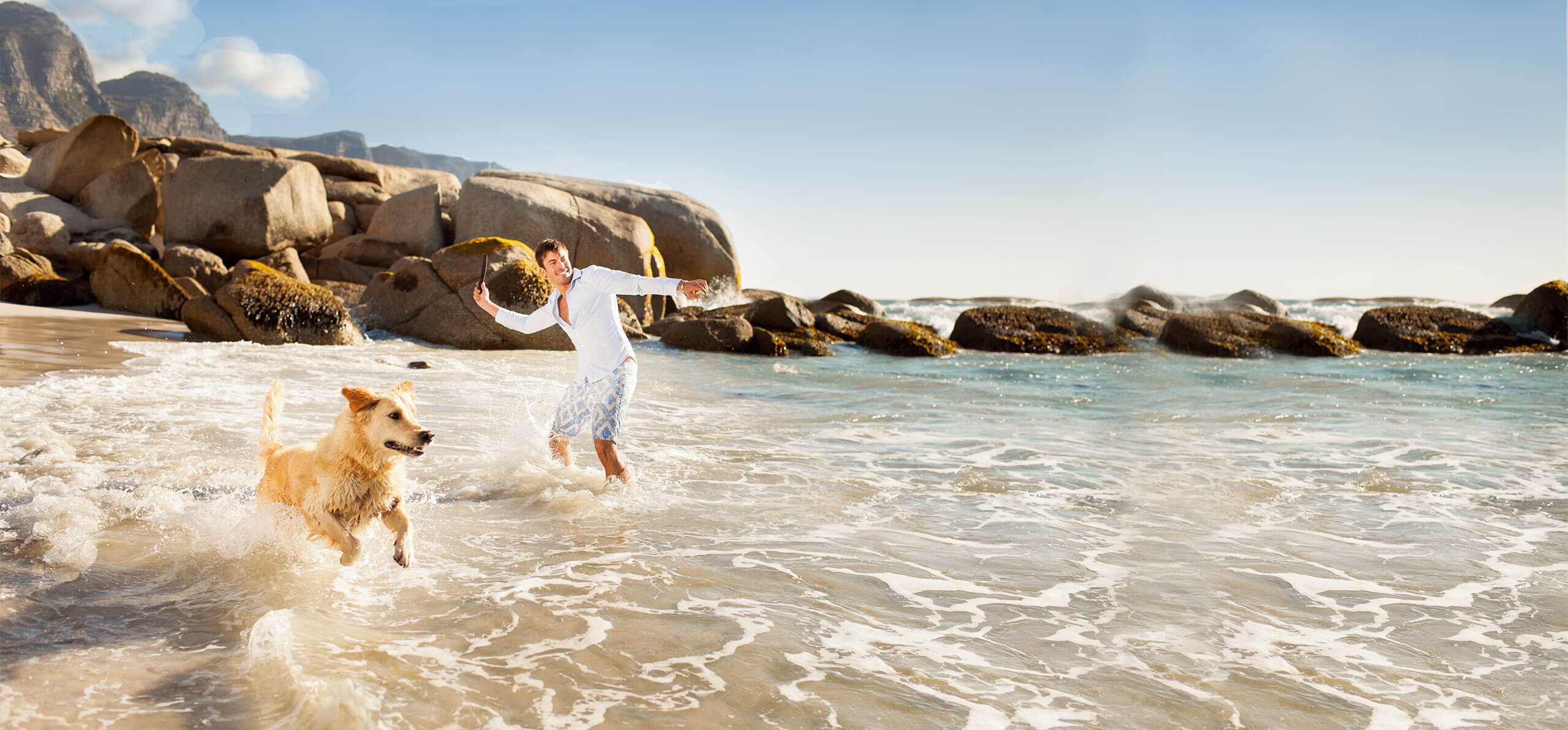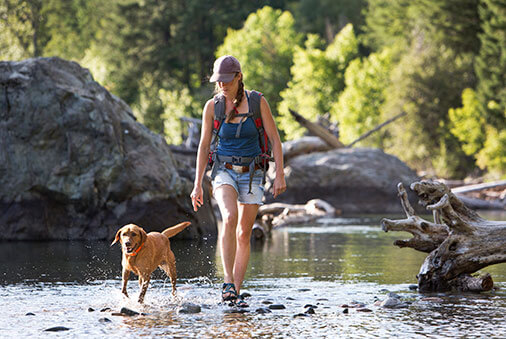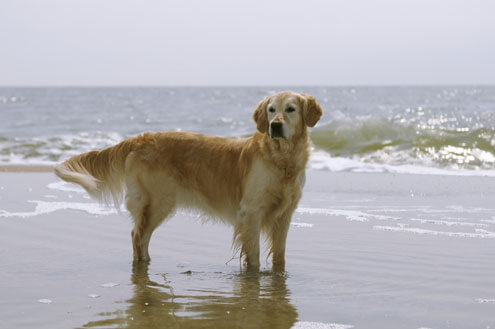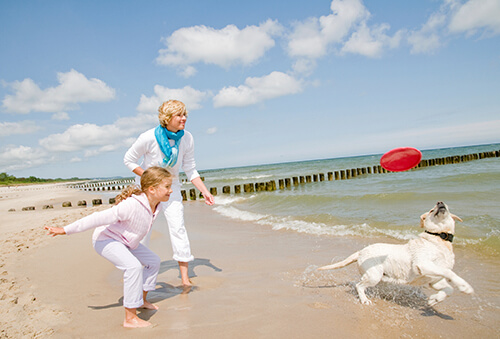Discovering the perfect beach is often the crown jewel of summer, and if that beach permits canines, better still. There are rules to follow, however, so keep the following in mind when you escort your furry pal to the shore. After all, the fewer “NO Dogs Allowed” signs pet parents see, the better.
1. Dog-friendly or Dog-free?
Although your pooch is adorably cute and well behaved, there are places where he’s not welcome. Nothing personal. Though the great outdoors are usually pet friendly, a large number of beaches don’t allow dogs, even when they’re leashed.
Rules are usually clearly posted at the beach’s entrance but it’s worth checking online before you arrive. Fortunately, dog-lovin’ beaches do exist, so you’ll most likely find one not too far away.
2. Olympic dog paddler?
Canines may seem to be instinctual swimmers, just add water, but some breeds can’t swim at all. Don’t assume your pooch will paddle the second you let him loose in water. Test his abilities to see if he flounders; if so, it’s time for D.I.Y. swimming lessons.
Start in shallow water where your pooch can wade deep enough but still touch the bottom. Once he acclimates, guide him slowly into deeper water. Hold your pal around the waist and let him get used to paddling to keep himself afloat. Once he seems confident, let go and let him swim solo with you by his side. After a few sessions, your dog will look like a natural born swimmer.
3. Bring fresh water
During hot summer days, dehydration is a real threat to your best buddy. Bring plenty of water and be sure you both drink enough throughout the day.
Even if visiting a lake that’s not salt water, you'll still want fresh water for your dog. Lapping up polluted lake water, especially water that’s been sitting still, may pose a risk so providing your pooch with potable water will steer him away from sipping lakeside.
TIP: Buy a collapsible bowl or portable container to transport your pup’s water easily.
4. Pack portable shade
On a beautiful sunny day, sand can turn into a sizzling surface in no time. You can get canine booties to protect your dog’s pads from searing but it’s best to find a beach with plenty of natural shade, or bring your own.
A beach umbrella or pop-up canopy can shelter both you and your furry friend from the sun and provide a shady nap respite. Remember, sun and heat exposure can lead to heatstroke or dehydration, so monitor how much sun time your dog gets fetching balls or swimming.
TIP: Get your dog his own beach towel to lay on in the shade, chew toy graphics optional.
5. Watch out for "ruff" water
When the wind’s blowing and the water’s choppy, you’ll want your dog to be a landlubber, even if he’s a super swimmer. Popular beaches and lakes crowded with boats, jet skis, paddleboards, and surfers can all be hazardous to your dog, so assess the scene carefully before you let your dog dive in.
6. Be a scooper
As with any outdoor activity, be sure to pack your scooper and bags to clean up after your dog. Some dog-friendly beaches may offer free plastic bags but always bring your own to be sure you have enough. Ideally, guide your pooch to the edge of the beach to do his business, preferably in vegetation areas where no one wanders. Never bury his waste in the sand unless you want to turn the beach into a dog-free zone and ruin it for everyone.
7. Shake it off
Once you’re off the beach, brush your dog down to get rid of superficial sand. At home, wash your pooch with safe, nontoxic soap and rinse him off thoroughly with a hose. Sand and seaweed look great on the beach, not so much in your living room.
With just a few precautionary preparations, life for you and your furry family member can surely turn into glorious days at the beach.





